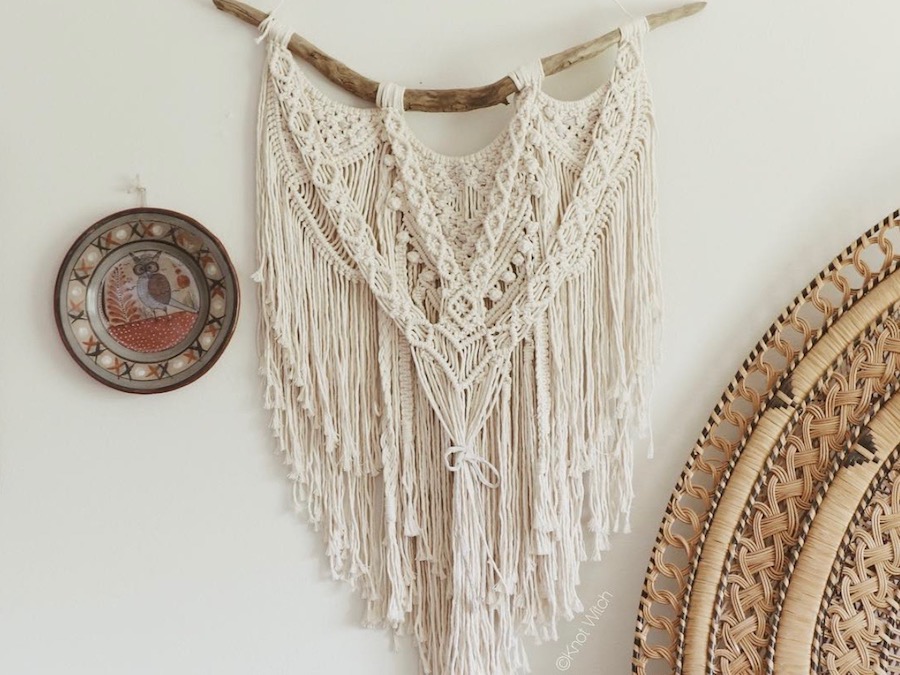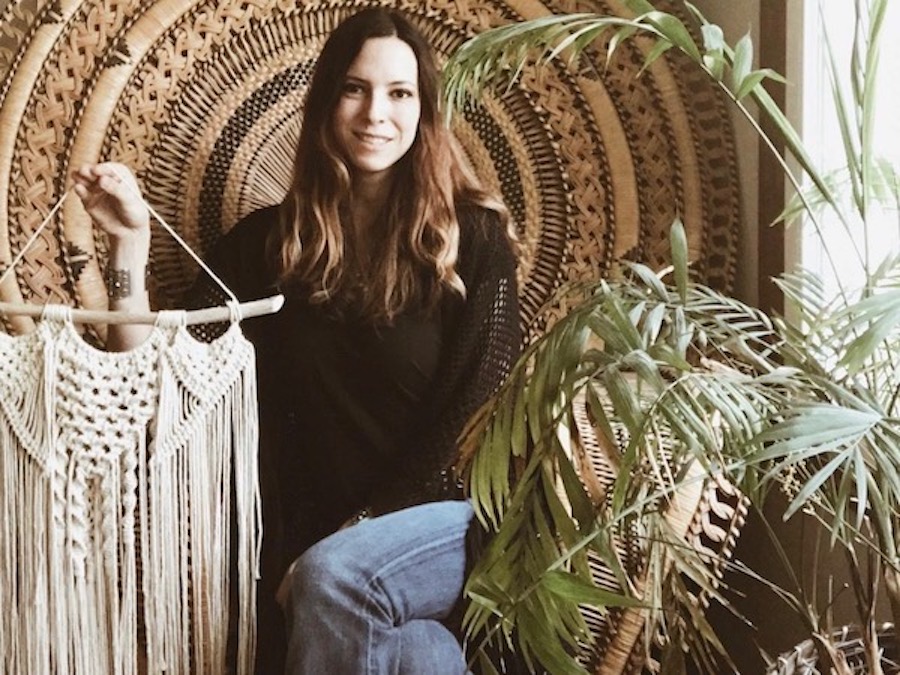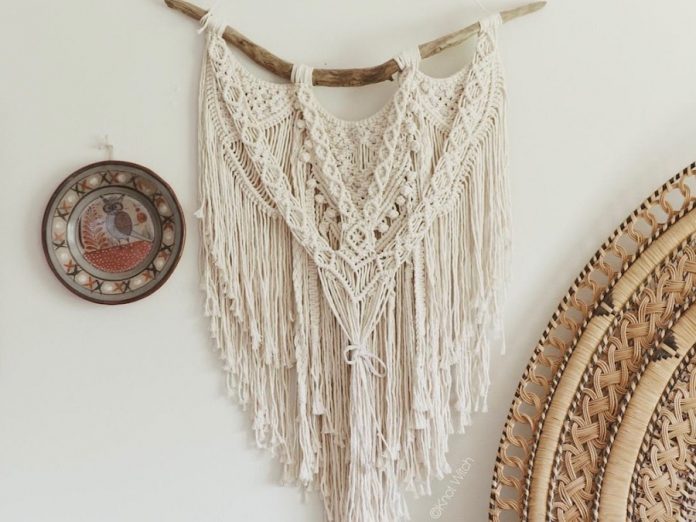
Disco may have died, but another quintessential part of the ’70s is making a comeback in today’s homes: the art of macrame.
Macrame is a type of textile using decorative knotting techniques. The primary knots are square knots and different combinations of half hitches, or simple overhand knots. It originated in 13th century Arabia, eventually traveling through Italy and France as early as the 14th century. European sailors are credited with spreading macrame around the world, competing with each other to create the most ornate knots.
Macrame remained niche until the ’70s ushered in a free-spirited approach to home decor and fashion. Soon, macrame plant holders, wall art, bikinis and purses were all the rage. But like leisure suits and fondue parties, the fad went out with the decade.
Newly popular 40 years later, #macrame has 1.4 million posts on Instagram. As indoor plants have surged in popularity, so have their once-bygone woven plant holders. Today’s macrame art, which is sold everywhere from Etsy to Urban Outfitters, tends to favor neutral colors and natural accents, like driftwood and crystal.

For Iowa City-based artist and shop owner Myra Caballero, macrame was the answer to a major lifestyle change.
“I had my baby four years ago, and I just didn’t have the time to really immerse myself in painting or illustration work,” she said. “It was just too many interruptions. So, I was just looking for something that I could pick up and work on and put down and not lose the inspiration.”
With a background in writing about sustainable fashion and design, Caballero also wanted to make art that valued slow craftsmanship and quality materials.
“I really liked that I could use natural materials like cotton and hemp and jute. And found objects, because I really wanted to make things that would not be detrimental to the environment,” she said.
After moving from Wyoming to Iowa, Caballero started an Instagram account to connect with others nearby. She posted photos of her macrame pieces and received positive responses, with some followers asking to buy her work. Over the past year, Caballero has sold macrame pieces through Good Makers Market in Tipton, Kae Apothecary in Mount Vernon, and Revival in Iowa City. She opened her online shop, Knot Witch, in February. In addition to handmade wall hangings and keychains, she also sells vintage jewelry and booklets.
“It’s awesome,” she said of working with local retailers. “I’ve met so many really lovely people. The support that this community has for creatives is phenomenal.”
Caballero’s creative process is rooted in a “calm, meditative atmosphere” in her studio. “I want my pieces to bring positive, comforting energy to their new homes,” she writes on her website. To anchor her wall hangings, she uses driftwood found locally. Her rope and string is made of natural materials and sourced from U.S. suppliers. The leather she uses are scrap pieces that have been vegetable-tanned.
Consumers are driving a shift toward environmentally-conscious products. A 2015 global study by Nielsen found that 66 percent of respondents were willing to pay extra for sustainable goods.
The resurgence of macrame may be partly due to a greater demand for handmade goods. Etsy, an e-commerce website focused on handmade items, generated over $3.25 billion in sales in 2017.
“I think people are getting sick of mass-produced, cheap quality things that don’t hold up and then end up in the landfill polluting the planet,” Caballero said. “When you buy something handmade, it’s more meaningful. And I think people treasure those pieces more.”






































